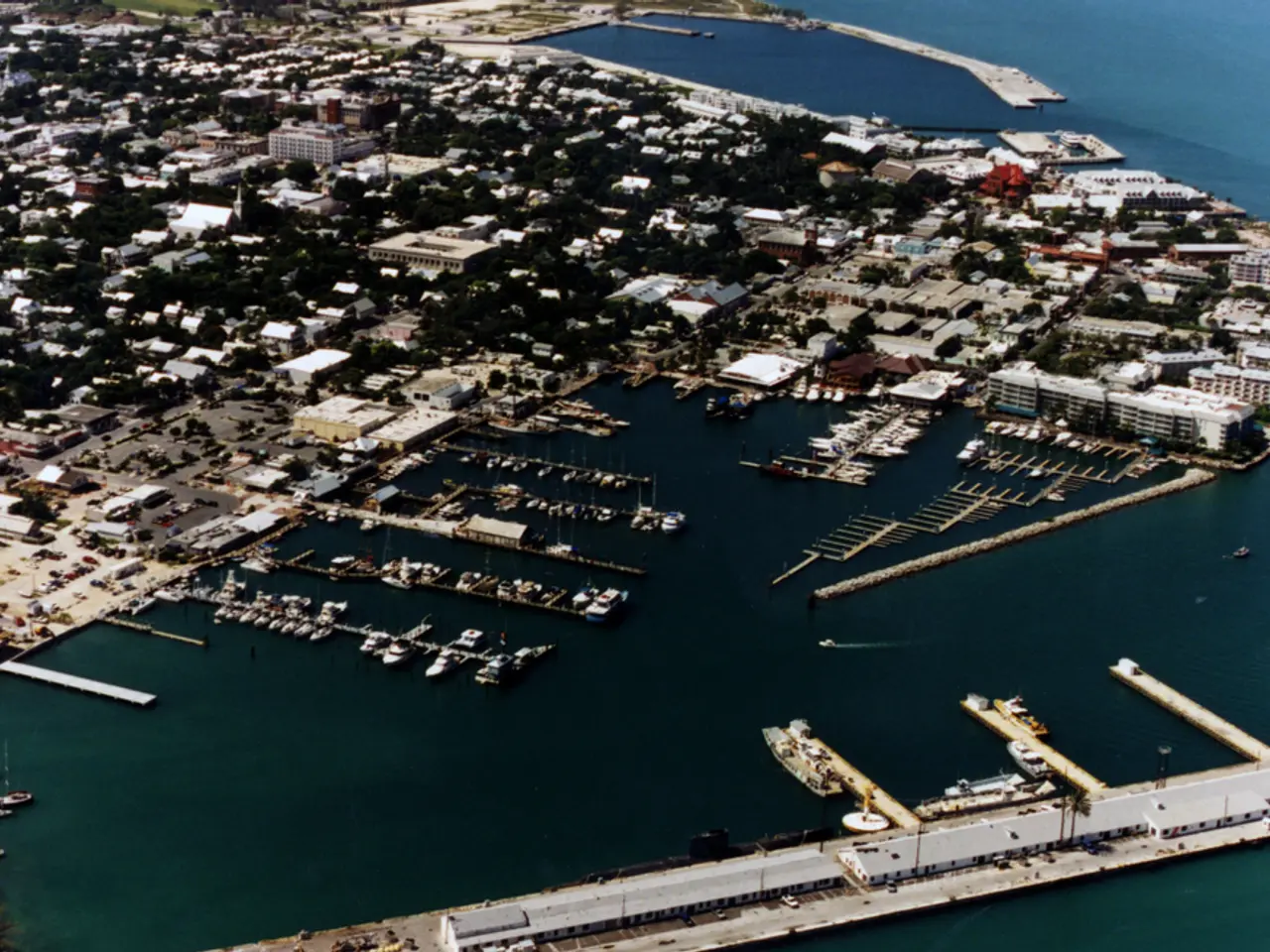Concerns rise in the maritime sector over decreasing passenger counts along the Norwegian shoreline
The Kiel Canal, a crucial waterway for the maritime economy in Germany and Europe, has experienced a significant decrease in shipping traffic in the second half of 2023. This decline, according to various reports, is largely due to operational constraints, including a shortage of water that forced restrictions on canal traffic and numerous breakdowns resulting in substantial time losses.
The decrease in traffic volumes is part of broader canal management challenges similar to those seen at the Panama Canal earlier in the year. To improve the situation, investments and upgrades in port infrastructure and maritime traffic management are being proposed and implemented more generally across European ports. These measures include funding for greener and more efficient shipping, advanced maritime traffic monitoring technologies such as the Automatic Identification System (AIS), and infrastructure upgrades to handle modern shipping demands.
While these measures are not Kiel Canal-specific, they reflect the kinds of responses being adopted to optimize shipping routes and capacity, which could influence the Kiel Canal’s traffic once water management and operational upgrades are addressed.
In response to these challenges, the Kiel-Canal Initiative e.V., a group that includes numerous companies, several chambers of commerce, public law corporations, institutions, associations, clubs, and regional authorities, has urged the urgent renovation of the Kiel Lighthouse and the creation of attractive working conditions at the Waterways and Shipping Authority NOK. The Initiative has also called for specialized personnel (nautical experts, technicians & engineers) to be assigned to the Waterways and Shipping Authority NOK.
Moreover, the Initiative has requested permanent stop of job cuts at the WSV and advocated for the functional preservation and future viability of the canal towards business, politics, and authorities. They believe that the energy-saving function of NOK and the Kiel Firth lighthouse is crucial for traffic safety and must be able to fulfill its role within the trans-European network.
The general speed reduction of 20% to 12 km/h in the Kiel Canal since July 1, 2023, has resulted in a 20% increase in the demand for pilots and canal pilots. This has led to waiting times before Brunsbüttel for pilots due to the need to fulfill required rest times.
Jens B. Knudsen, the Chairman of the Kiel-Canal Initiative e.V., can be contacted at 0431/9810, while Ingo Berger, the Chairman of the "Nautical Association of Kiel", can be reached at 0176/61482057.
In conclusion, the Kiel-Canal Initiative e.V. is actively advocating for improvements and renovations to address the operational challenges faced by the Kiel Canal. These measures are aimed at ensuring the safe and predictable passage for international shipping, optimizing shipping routes and capacity, and preserving the canal's future viability within the trans-European network.
- The decline in shipping traffic on the Kiel Canal, a major waterway in the European maritime industry, is causing concern, as it's linked to operational constraints.
- To mitigate these challenges, the Kiel-Canal Initiative e.V. is advocating for renovations of the Kiel Lighthouse, better working conditions at the Waterways and Shipping Authority NOK, and the appointment of specialized personnel.
- TheInitiative also believes in the importance of preserving the energy-saving function of NOK and the Kiel Firth lighthouse for traffic safety within the trans-European network.
- The general speed reduction on the Kiel Canal has resulted in a 20% increase in demand for pilots, leading to waiting times for ships to embark on their journeys.




